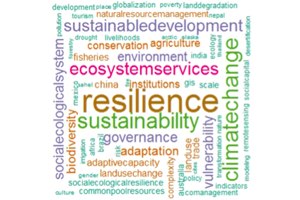SES research is a rapdily growing field that uses multiple methods, which can make it challenging for those entering the field to know where to start. A comprehensive review that focuses on SES as complex adaptive systems reveals a significant increase in SES research over the past three decades and also describes and organizes into categories the main types of methods being used (311 methods from an initial 632, grouped into a manageable 27 categories).
The authors also note the key role that the journal Ecology and Society continues to play in the development of this field, as the first open access, online journal in the SES field.
"Our timeline analysis shows the most significant inflection point in the rise of SES research to lie between 1999 and 2000, which coincides with the establishment of the Resilience Alliance in 1999 (Folke 2006, Parker and Hackett 2012), and the initial publication of their affiliate journal Ecology and Society, which has published more SES research than any other journal."
In addition to providing some welcome guidance to the abundance of methods commonly used in SES research, the authors note how the key words identified in their study reveal "a focus of SES research on pressing sustainability issues such as climate change, biodiversity loss, livelihoods, poverty, policy, land use change, water, and social and environmental justice" and advances how SES research is defined and practiced.
De Vos, A., R. Biggs, and R. Preiser. 2019. Methods for understanding social-ecological systems: a review of place-based studies. Ecology and Society 24(4):16.
https://doi.org/10.5751/ES-11236-240416

Keywords: SES research, methods, complex adaptive systems, place-based, Ecology and Society